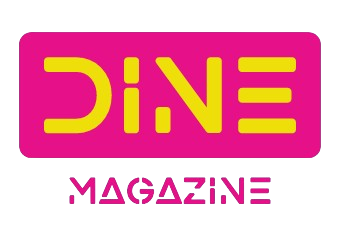If these last months have taught us anything at all, it is that there is nothing more precious or more fragile than our health and of those we love. But sometimes it can be challenging to know exactly what steps to take to protect our wellbeing.
Alternative medicine has saved untold numbers of lives across the decades. It continues to be our most excellent defense against some of humanity’s most devastating illnesses and catastrophic injuries. And yet, it is by no means the be-all-and-end-all of human health.
For millennia, human beings have found both comfort and healing in alternative medicine and continuing to have an essential place in our modern world. And though modern medicine had dominated patient care for well more than a century in the West, patients are increasingly returning to alternative remedies. Now, more than ever, they are recognizing the benefits of finding the balance between alternative and traditional medicine to achieve optimal health and wellness.
A Healthy “Alternative” Medicine?
Alternative medicine reflects a different option from more “modern” standards and practices of care based on pharmaceutical treatments and technology-based care.
In other words, alternative medicine is considered to be outside of the mainstream of Western medicine, which is, perhaps ironically, often termed traditional.
Traditional Western medicine centers on the prevention, diagnosis, or treatment of disease or injury. It takes a more myopic view of health, an idea that, principally, defines health as the absence of some pathology, some significant deviation from the norm.
Alternative medicine, on the other hand, is not disease-focused in the way Western medicine is. Many forms of alternative medicine emphasize the whole person, focusing not on the illness or disease, but the individual. The emphasis is on restoring the patient to a state of balance. It envisions health as the wellbeing of the whole person, mind, body, and spirit.
Holistic Medicine
Holistic medicine, as an amalgamation of the two, supports the more disease-focused and interventionist strategies of traditional medicine with alternative therapies, such as herbal remedies, meditation, and yoga. The ultimate goal is to enhance the efficacy of conventional treatment while mitigating its potentially negative impacts. Simultaneously, the goal is to use alternative medicine as a preventative tool. A method of maintaining wellness to the greatest extent possible, to reduce the frequency and severity of traditional medical interventions.
Consider COVID-19. A holistic approach would combine a traditional treatment plan, such as antiviral medications, with alternative medicines designed to boost the immune system. For example, through the use of plants, herbs, natural supplements, tinctures and teas, and other natural approaches.
Why It Matters
Traditional Western medicine has, without question, dramatically improved the quality and length of life for human beings the world over. Nevertheless, for all its indisputable benefits, it has also brought about significant harm as well.
According to a recent study from Johns Hopkins, an estimated 250,000 people die in the United States every year due to preventable medical errors. Between 1990 and 2016, more than 100,000 Americans are believed to have died. Not as the result of medical errors, but only due to “adverse” events caused by treatment. This includes hospital-acquired infections and complications related to cancer care.
For seniors, the potential harms can be especially significant. Poor medication management, for instance, can lead to dangerous side effects, heightened risk of accidental overdose, and the potential for life-threatening drug interactions.
But it’s not only the health risks associated with conventional Western medicine that hurts patients and their families. It’s also massive amounts of medical debt incurred from even the most routine treatments. More than 79 million Americans are carrying significant medical debt, many facing sums so large that debt forgiveness is the only option for avoiding bankruptcy.
A holistic approach seeks to mitigate these harms while maximizing the benefits of traditional medicine. For example, the emerging field of holistic nursing aims to combine conventional Western therapeutics. The strategy of care includes nutrition, exercise, and spirituality to improve patient health and, above all, to enhance their overall quality of life.
How Alternative Medicine Works
Alternative medicine seeks to maintain or restore wellness without subjecting the patient to the substantial physical risks and financial burdens of conventional Western medicine.
One of the most important strategies used in alternative medicine involves a combined protocol of stress management, diet, and nutrition supplements. Also, including zinc, echinacea, and vitamins C and D, to boost the immune system.
Not only will this increase the body’s resistance to viruses and bacteria, but a robust immune system can also help the body fend off more fearsome illnesses, such as cancer. If you are undergoing conventional cancer treatments, increasing your immune function can also help you to withstand the side effects of your treatment better.
Alternative medicine can also be a powerful tool in fighting one of humanity’s most significant health challenges: chronic pain. In 2016, it was estimated that as many as 20% of people in the US were contending with chronic pain. And this has been a significant factor in contributing to the opioid epidemic that has ravaged our nation in recent years.
Holistic medicine, which refers to the integration of traditional and alternative medicine, can be highly effective in treating chronic pain. Once again, alternative therapies use a person-focused approach to pain management. This combines gentle exercise, herbal remedies, and alternative therapies, such as heat, acupuncture, massage, and chiropractic. Simultaneously, a more traditional approach, such as steroidal medications or surgical interventions, can be used to target the disease or injury, causing the pain.
The holistic approach to pain management is based on the premise that pain is not only the result of injury or illness, but is exacerbated by psychological, emotional, and even social factors. These can range from stress and anxiety to the foods we eat, the quality of our sleep, and how we work, live, and move through the world.
The Takeaway
Conventional Western medicine has changed our world for the better in many ways. But it has also brought about significant harms. And now, more than ever, the use of alternative medicine is proving its enormous value in helping patients achieve whole-person wellness, health, and healing in the heart, soul, body, and brain.
Read more:



